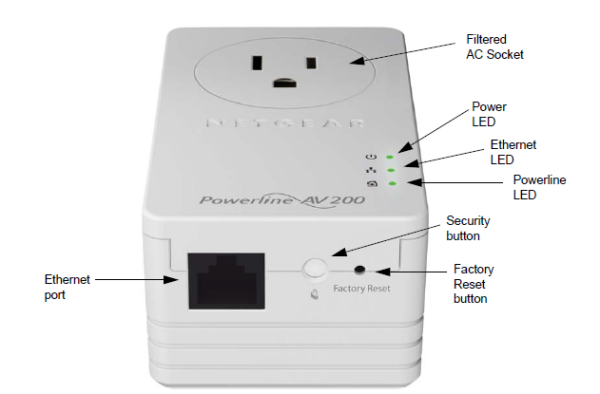Netgear Selects Broadcom HPAV Solution for Powerline Products
by Ganesh T S on January 7, 2013 6:00 PM EST- Posted in
- Powerline Adapters
- Broadcom
- HomePlug
- *VA
HomePlug and G.hn are tussling it out to emerge as the de-facto powerline standard, but HomePlug has enjoyed a lot of success as the incumbent. In the North American market, Intellon was the pioneer. They were later acquired by Atheros, who were then acquired by Qualcomm. Almost all PLC (Powerline Communication) devices shipping directly to consumers so far have been based on Intellon / Atheros chipsets. One of the exceptions was the Belkin's PWLAV500 solution based on Gigle Semiconductor's silicon. Gigle was later acquired by Broadcom.
Netgear has been one of the leading vendors of powerline communication products, and so far, they have all been based on Atheros silicon. Today, Broadcom announced that the latest Netgear powerline adapters XAV1201, XAV1301, XAV1401, and XAV1601 are all powered by the BCM60321.
It must be noted that the BCM60321 is a HPAV 1.1 solution and provides PHY rates of up to 200 Mbps. The BCM60321 is a monolithic PLC chipset with an integrated AFE (Analog Front End) manufactured in a 40nm process. This should lower the BOM cost and enable a cheaper powerline adapter for the consumers. Interoperability with all existing PLC adapters (based on Qualcomm Atheros's firmware version 3.1 or later) is guaranteed.











4 Comments
View All Comments
RealBeast - Monday, January 7, 2013 - link
It would be nice if they would address the universally evident under performance by powerline products. On the 500Mbps models, the best you get on the same circuit two side by side outlets with no other devices on that line is around 80Mbps, then every manufacturer blames it on lousy home wiring. At any distance around 40Mbps is amazingly high for the 200/500Mbps models, and I'm not talking about crossing buses.winterspan - Tuesday, January 8, 2013 - link
Agreed. These products are great in the since that if you can't run Cat5 in your house, it's really your only options for network-based media streaming of HD content, but you are totally right that they are WAY slower than advertised. Similar to 802.11N advertising 300+mbps and only getting 60-70...On a related note, If anyone is looking to setup a low-cost home media strategy, I just did the following and it worked out great!
1) Get a Zotac ZBOX Nano (I got the one with AMD E-series CPU/GPU)
2) Install OpenElec on the ZBOX. It is a lightweight linux distribution built solely to run XBMC on a media center PC. Download the installer, it'll make a bootable USB stick --- 5 minutes later you are up and running. (http://openelec.tv/)
3) Setup a network drive to store all your media which the ZBOX will access over the network. In my case I just used my older desktop PC. Obtain your media however you wish (Torrent, Usenet, Rip DVDs, etc)
Shadowmaster625 - Tuesday, January 8, 2013 - link
I have a 100mbps powerline adapter and it is about 5 times as fast as my ~50mbps wifi. I have 2 computers hardwired to my router and one on the powerline adapter. It is actually just as fast with file transfers as the hardwired computers.loreeselmer - Wednesday, January 9, 2013 - link
You mean those marketing performance numbers are "guaranteed not to exceed" numbers? I'm shocked! :-)The 200 Mbps number means 100 in each direction, so 100 Mbps is the theoretical max for a unidirectional transfer. If you have more than two adapters forming a network and multiple transfers running concurrently, they'll share the available channel bandwidth.
I've been able to sustain 75 Mbps throughput for large file transfers using the 200 Mbps products, this is in a normal work environment over building wiring with the adapters in different rooms. Not the numbers on the box, but not bad.
One nice aspect of HomePlug devices is that they tend to work at a degraded data rate in the presence of a noisy channel, as opposed to simply failing to connect. The HomePlug OFDM scheme is very robust.